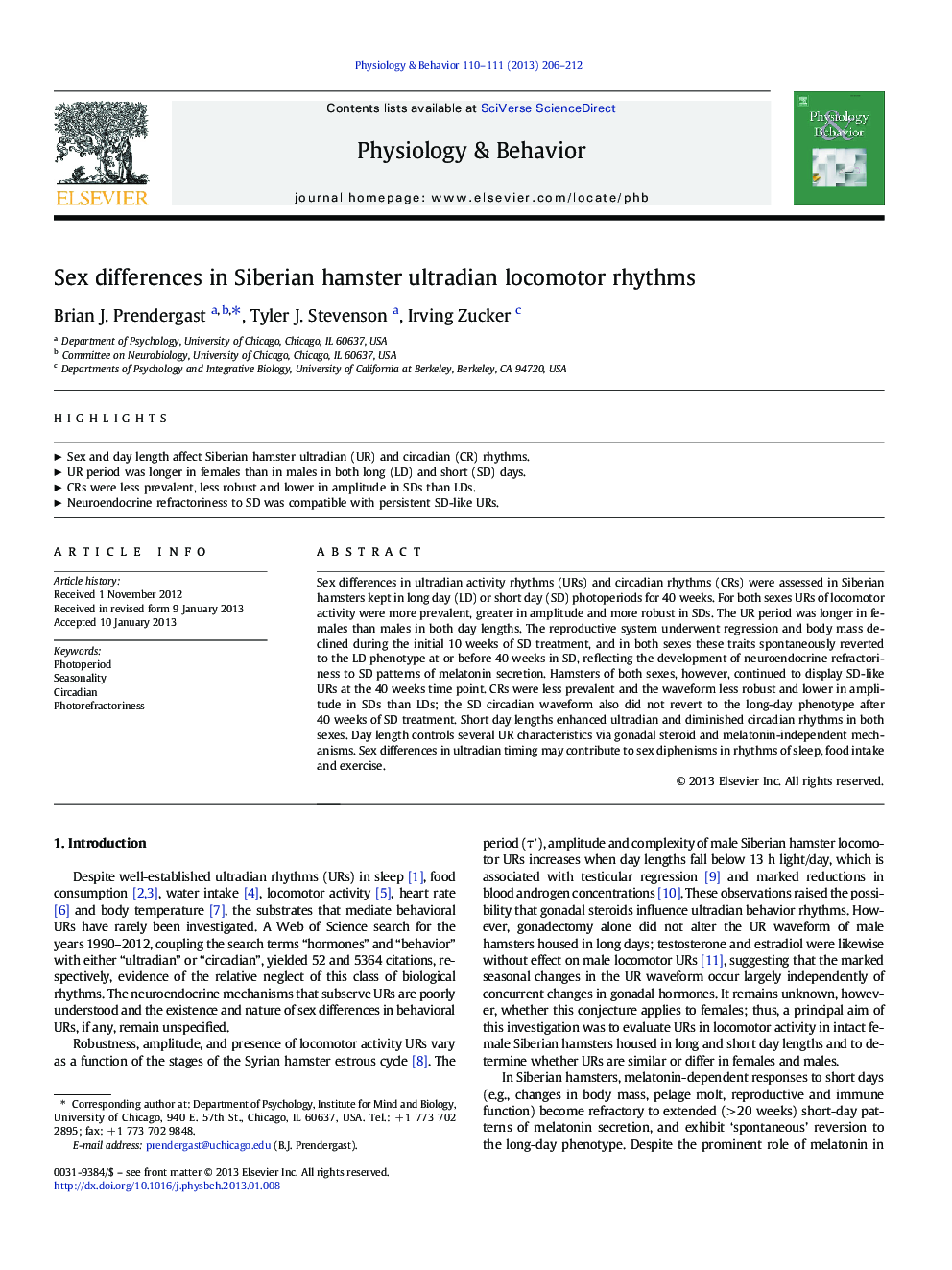| Article ID | Journal | Published Year | Pages | File Type |
|---|---|---|---|---|
| 5924882 | Physiology & Behavior | 2013 | 7 Pages |
Sex differences in ultradian activity rhythms (URs) and circadian rhythms (CRs) were assessed in Siberian hamsters kept in long day (LD) or short day (SD) photoperiods for 40Â weeks. For both sexes URs of locomotor activity were more prevalent, greater in amplitude and more robust in SDs. The UR period was longer in females than males in both day lengths. The reproductive system underwent regression and body mass declined during the initial 10Â weeks of SD treatment, and in both sexes these traits spontaneously reverted to the LD phenotype at or before 40Â weeks in SD, reflecting the development of neuroendocrine refractoriness to SD patterns of melatonin secretion. Hamsters of both sexes, however, continued to display SD-like URs at the 40Â weeks time point. CRs were less prevalent and the waveform less robust and lower in amplitude in SDs than LDs; the SD circadian waveform also did not revert to the long-day phenotype after 40Â weeks of SD treatment. Short day lengths enhanced ultradian and diminished circadian rhythms in both sexes. Day length controls several UR characteristics via gonadal steroid and melatonin-independent mechanisms. Sex differences in ultradian timing may contribute to sex diphenisms in rhythms of sleep, food intake and exercise.
⺠Sex and day length affect Siberian hamster ultradian (UR) and circadian (CR) rhythms. ⺠UR period was longer in females than in males in both long (LD) and short (SD) days. ⺠CRs were less prevalent, less robust and lower in amplitude in SDs than LDs. ⺠Neuroendocrine refractoriness to SD was compatible with persistent SD-like URs.
